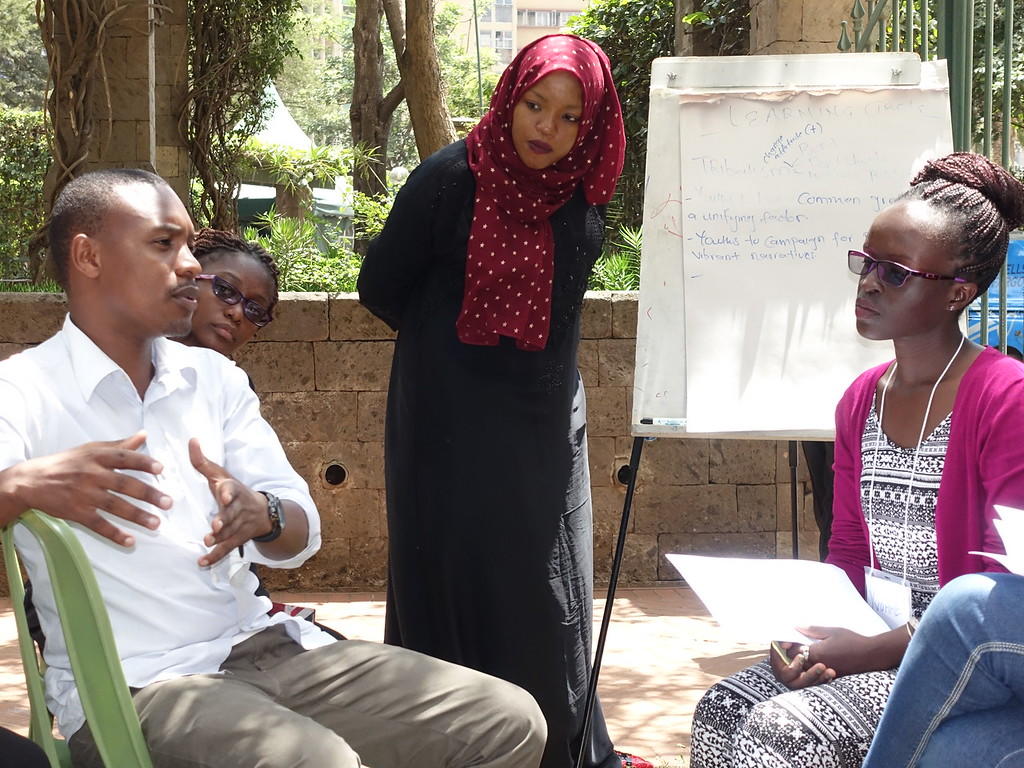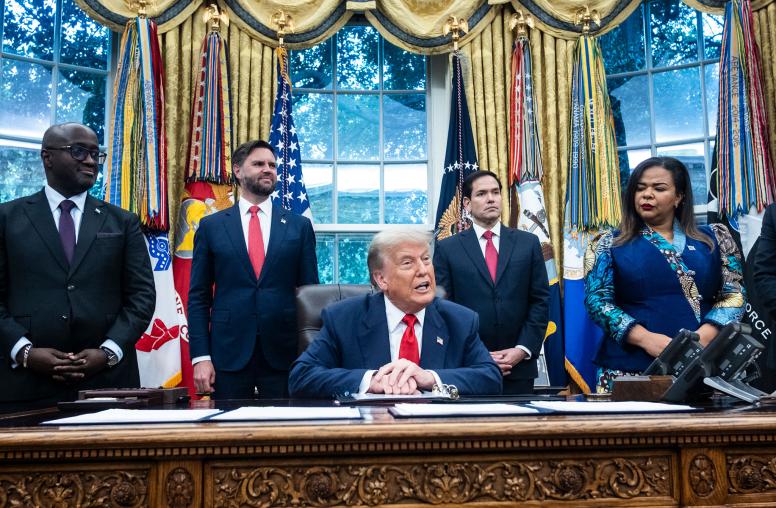Design, Monitoring and Evaluation for Programming in Fragile Environments
It is now more important than ever for practitioners working in fragile and conflict affected environments to justify the relevance and effectiveness of their programs to achieve a desired social change, particularly when resources are limited.

Course Overview
This course presents an overview of essential principles in design, monitoring, and evaluation practice that enables peacebuilding professionals to successfully apply new skills to implement more effective projects that produce measurable results. If projects are designed well at the beginning, the monitoring and evaluation tools will be more effective to gather necessary data to ensure they are on target towards the intended outcomes and impact. This helps ensure that risks to stakeholders are minimized, outcomes are clearly measured to maximize program impact, work is contributing to the knowledge base of the field, and that limited resources are being used efficiently.
Note: This course is not for monitoring and evaluation professionals, but rather for individuals who manage projects and programs. It was designed and developed in partnership between USIP and the Geneva Centre for Security Policy.
Learning Objectives
After taking this course, participants will be able to:
- Design effective programs in fragile and conflict prone environments;
- Articulate a theory of change to reveal and test underlying assumptions in a program;
- Design and implement a results framework to track a program’s intended outcomes and impacts;
- Determine relevant data collection methods in fragile environments;
- Understand the essentials of evaluation design.
Agenda
Chapter 1 - Introduction to DM&E
This chapter examines the critical role that DM&E plays in the work of peacebuilding, security, and development. It addresses the unique challenges of designing, implementing, and evaluating programs in fragile and complex environments and the role of evidence-based decision making to ensure programs achieve their intended outcomes. This chapter also describes the integral role of design that enables effective monitoring and evaluation. Finally, project cycle management is introduced as a practical tool to integrate design, implement, and evaluation.
Chapter 2 - Program Design & Theories of Change
This chapter addresses the foundations of strong project design to enable effective monitoring and evaluation. The results-based management framework is introduced to help you design towards outcomes and impacts. The chapter then discusses the role of strategic planning and the need to adaptive to specific contexts. Project cycle management is introduced as a tool to effectively integrate design, implement, and evaluation. Finally, this chapter provides practical tools to map underlying problems and causes of a program, and to identify potential solutions for maximum impact.
Chapter 3 - Designing a Results Framework
This chapter introduces the results framework as a tool to implement results-based management into DM&E practice. It outlines the four basic building blocks of the results framework (outcomes, baselines, indicators, and targets) and challenges students to apply it as an initial evaluative framework. The role of monitoring is introduced as a means to track progress towards a program’s intended outcomes and impacts.
Chapter 4 - Designing an Evaluation
This chapter conveys the foundational knowledge and skills to practically design an effective evaluation. It examines the three different types of evaluation questions and describes potential sources of questions that can feed into the evaluation design process. This chapter also explains the three different types of evaluation design: experimental, quasi-experimental; and non-experimental.
Chapter 5 - Data Collection Methods
This chapter describes different ways to collect information and data as part of the monitoring and evaluation process. The two different types of data are introduced, as well as the most commonly used data collection tools that are best suited for fragile environments. This chapter examines essential considerations when trying to decide which methods to implement: interviews, surveys, focus groups, observation, and existing data. Participants are challenged to evaluate the methods which are most appropriate for different contexts.
Chapter 6 - DM&E in Complex Environments & Practical Tips
This chapter focuses on the different contexts in which we work and how they impact the implementation of DM&E in practice. It introduces the concept of “complexity” and the associated challenges of conducting DM&E in difficult, fluid, and fragile environments. This chapter addresses institutional factors which also impacts the success of DM&E projects. Institutional “line of sight”, in particular, helps participants conceptualize how individual programs contribute to broader institutional goals. This chapter concludes the course by offering practical tips to strengthen and integrate DM&E practice into their own institutions.
Instructors
- Andy Blum, Executive Director, Joan B. Kroc Institute for Peace and Justice at the University of San Diego
- Caty Clement, Associate Fellow, Global Fellowship Initiative, Geneva Centre for Security Policy
- Ray Rist, Co-Creator and Co-Director of the International Program for Development Evaluation Training (IPDET), former President of IDEAS.



